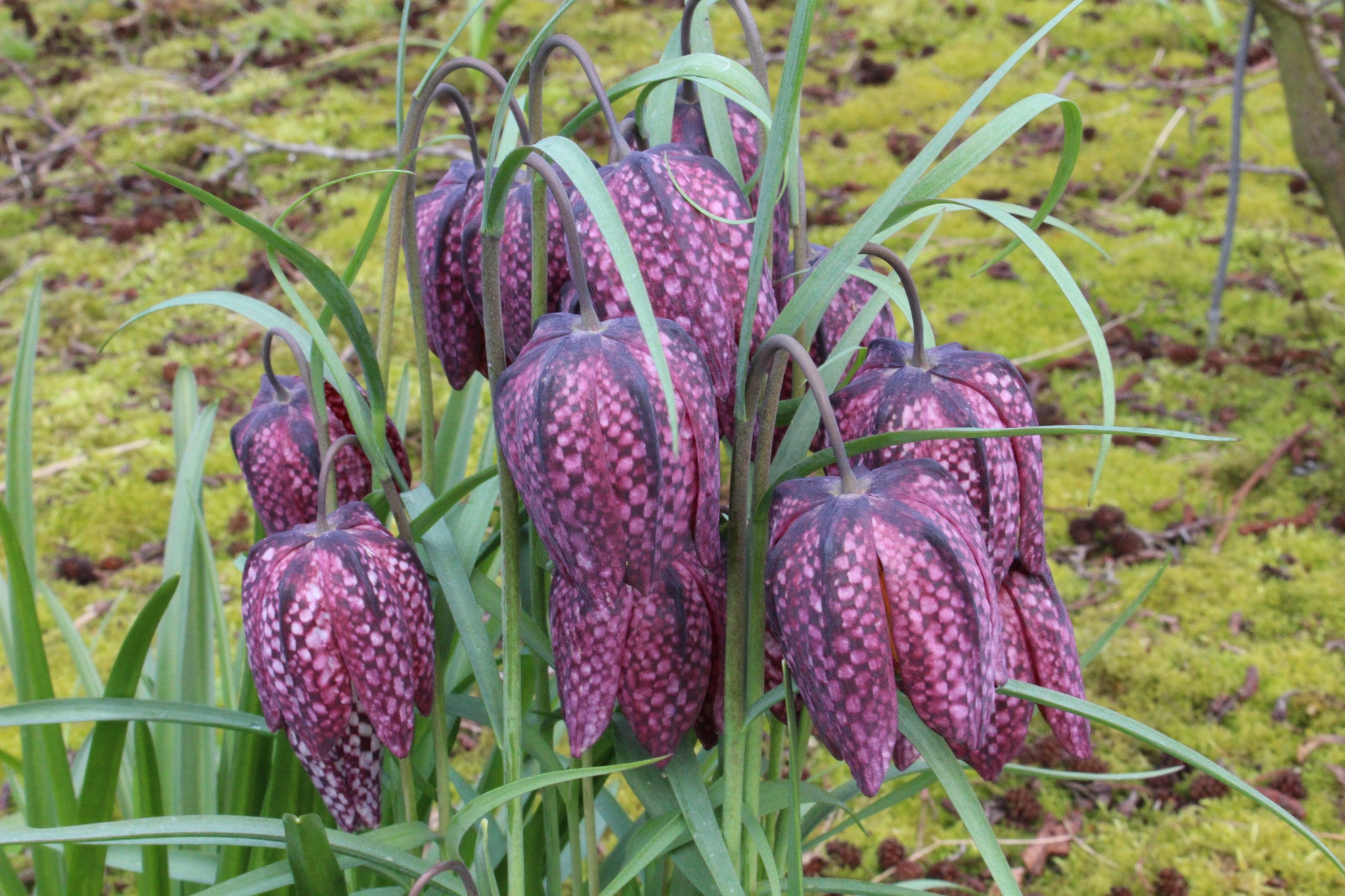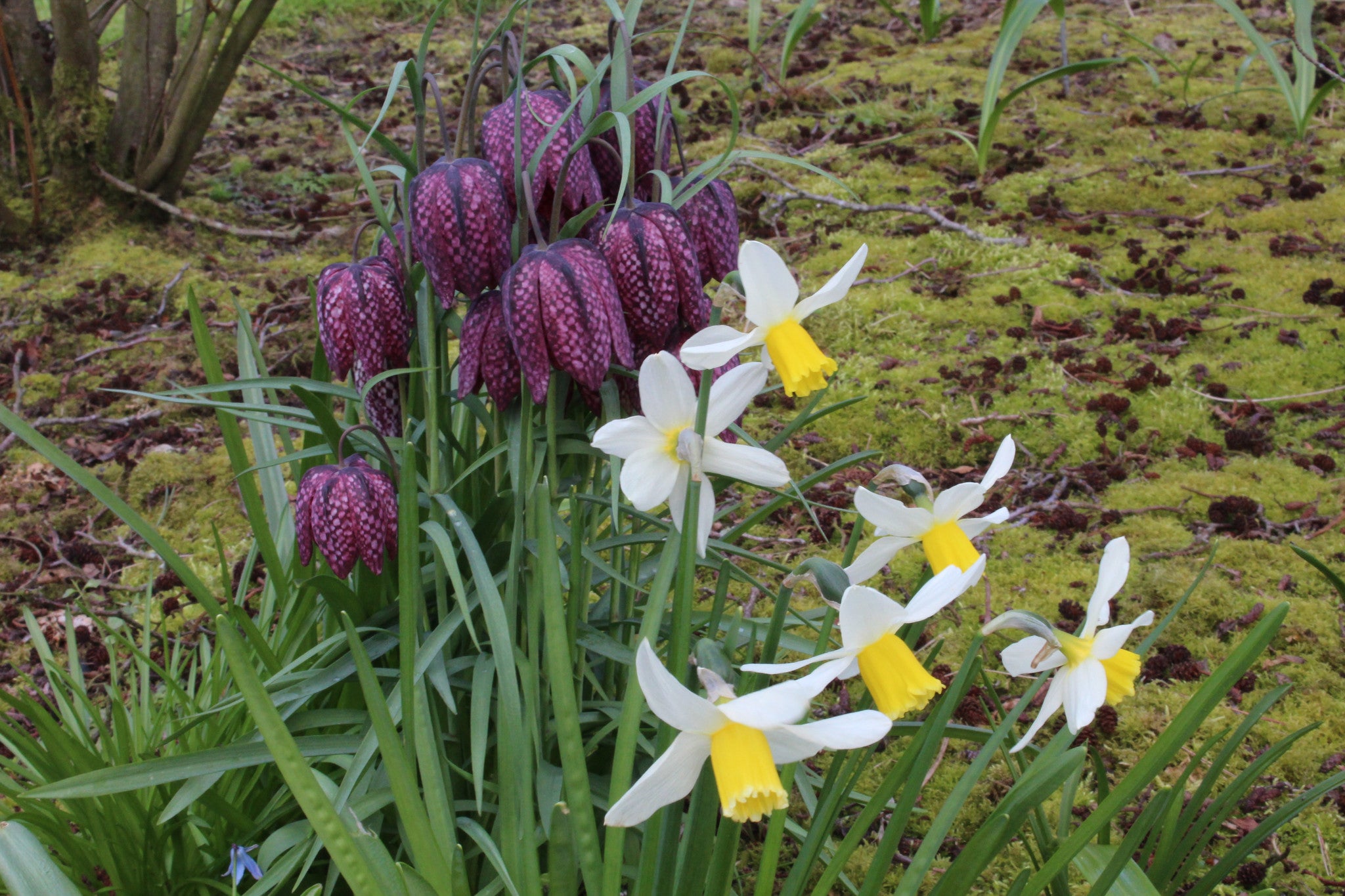Fritillaria meleagris
Approx. 0.5 litre pot
About this cultivar:
Fritillaria meleagris is commonly known as snake's head fritillary, snake's head, chess flower, frog-cup, guinea-hen flower, guinea flower, leper lily (because its shape resembled the bell once carried by lepers), Lazarus bell, chequered lily, chequered daffodil, drooping tulip or, in northern Europe, simply fritillary. Sorry for any confusion….
Vita Sackville-West once called it "a sinister little flower, in the mournful colour of decay". That name never stuck though, so lets stick to the botanical latin shall we? In botanical terms the name meleagris means "spotted like a guineafowl" and thats good enough for most people, because the flower has a chequered pattern in shades of purple.
Fritillaria meleagris is native to Europe and western Asia. However in the British Isles there is some disagreement amongst botanists as to whether it is a native species or a long-established garden escapee. The plant was first described in the 16th century by herbalist John Gerard who had only known of it as a garden plant and it was not recorded in the wild until 1736, which has led some to argue that it must be an escapee. However, the fact that its habitat is usually confined to ancient hay meadows and it does not easily spread to adjoining land, leads others to the conclusion that it is a native species which became isolated from the European population when Britain was cut off from mainland Europe after the last glacial period.
The plant was once abundant in the UK, particularly in the Thames Valley and parts of Wiltshire, and was collected in vast quantities to be sold as a cut flower in the markets of London, Oxford, and Birmingham. During World War II most of the ancient meadows were ploughed up and turned over to the production of food crops, destroying much of the plant's habitat. Although a popular garden plant it is now rare in the wild, although there are some notable sites where it is still found, such as the meadows at Magdalen College, Iffley Meadows, Oxford and the Oxfordshire village of Ducklington, which holds a "Fritillary Sunday" festival. Why not start your own?
- Position: Full sun, partial shade
- Soil: Almost any soil, grows well in Ballyrobert
- Flowers: March, April, May
- Other features: Grows well in Ballyrobert, Royal Horticultural Society Award of Garden Merit (RHS AGM)
- Hardiness: Fully hardy - grows well in Ballyrobert!
- Habit: Clump forming, Columnar or Upright
- Foliage: Deciduous
- Height: 10 - 25 cm (0.3 - 0.75 ft)
- Spread: 10 - 25 cm (0.3 - 0.75 ft)
- Time to full growth: 2 to 5 years
- Plant type: Herbaceous Perennial, bulb
- Colour: Green, purple, black
- Goes well with: Narcissus and Tulipa
About this genus:
Fritillaria is a genus of Eurasian, North African, and North American plants in the lily family.
The name is derived from the Latin term for a dice-box (fritillus), and probably refers to the checkered pattern of the flowers of many species. Plants of the genus are known in English as fritillaries. Some North American species are called mission bells.
Fritillaries often have nodding, bell- or cup-shaped flowers, and the majority are spring-flowering. Certain species have flowers that emit disagreeable odors. The scent of Fritillaria imperialis has been called "rather nasty", while that of Fritillaria agrestis, known commonly as stink bells, is reminiscent of dog droppings. On the other hand, Fritillaria striata has a sweet fragrance.
Fritillaria extracts are used in traditional Chinese medicine usually for cough remedies. They are on to something; in one recent study fritillaria reduced airway inflammation by suppressing cytokines, histamines, and other compounds of inflammatory response. Also the bulbs of some species were commonly eaten by indigenous peoples of the Pacific Northwest coast.
But don’t try this at home! Most fritillaries contain poisonous alkaloids such as imperialin; some may even be deadly if ingested in quantity.
The emblematic and often unusually-colored fritillaries are commonly used as floral emblems. Fritillaria meleagris (snake's head fritillary) is the county flower of Oxfordshire, UK, and the provincial flower of Uppland, Sweden. In Croatia the checkerboard pattern of its flowers may have inspired the pattern on the nation's coat of arms. Fritillaria species also make up the floral emblem of Ishikawa Prefecture and Obihiro City in Japan. We could be here all day…..
Books often tell you Fritillaria prefer well-drained soil and full sun. But most of the species we sell will grow almost anywhere in the British Isles that isn’t pitch black, a desert, or a puddle. Actually they may even grow in puddles, we grow some Fritillaria meleagris by a stream, beneath woodland. In thick clay. (see photos…). So much for the books… I'd say just take it on a case by case basis!
As for companion plants: how about other spring flowering narcissus and tulips?




